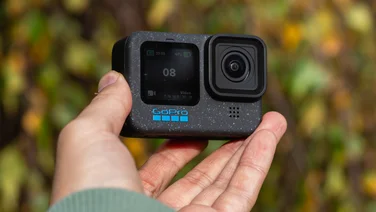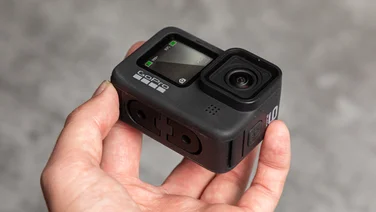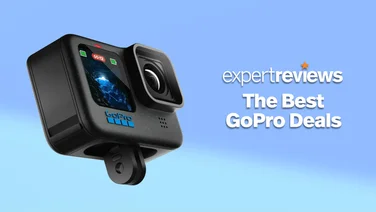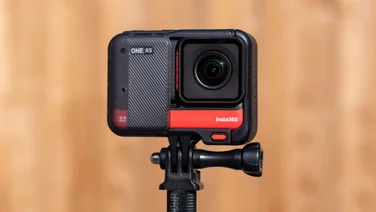To help us provide you with free impartial advice, we may earn a commission if you buy through links on our site. Learn more
- How to choose the best drone for you
- The best drones to buy
- 1. DJI Air 2S: The best compact drone money can buy
- 2. DJI Mavic Mini: The best drone that anyone can fly
- 3. DJI Mavic 2 Zoom: The drone with optical zoom
- 4. Parrot Anafi: A quiet, compact drone that can film in 4K HDR
- 5. Parrot Mambo: A great beginner drone that's fun to fly

The drone industry is booming, and it’s easy to see why. Flying the best drones can be fun and rewarding and many modern models come equipped with high-quality cameras, too, making it simple to capture stunning aerial video and photographs.
Whether you want to fly for the pure pleasure of it or you want to up your photography game, though, it pays to choose the best model to get started with; after all, there’s a huge variety of choice and it’s easy to go wrong. Many, particularly cheap drones, aren’t very good at all.
We’re here to help. We’ve piloted our fair share of drones, from the unrealistically cheap to the ludicrously expensive, and have collected our pick of the best models available in this article. You’ll also find a guide here that explains how to avoid making the wrong buying decision, as well as what to consider when purchasing a drone.
READ NEXT: The best vlogging cameras to buy
How to choose the best drone for you
Are drones legal in the UK?
The short answer is yes. As of 30 November 2019, however, UK law requires drone pilots to register with the Civil Aviation Authority and pass a simple multiple-choice test in order to legally fly a drone between the weight of 250g and 20kg. This is not a complicated process, however, nor is it particularly expensive.
Pilots will also need to pay a small annual fee of £9. Once you’ve passed the test, which is only 20 questions long and free to take, you’ll be given a Flyer ID and an Operator ID number. The latter must be used to label any drone you fly and you must be able to present both ID numbers if challenged. You can register with the CAA and take the test here.
Where can I fly a drone?
In the UK, the laws state that you must not fly a drone:
- Higher than 120m above the nearest surface of the Earth
- Within 50m of “non-involved” individuals (ie. people you don’t know)
- Within 150m of any residential, commercial, recreational or industrial areas
- Anywhere people have congregated in a crowd (ie. at a festival or sporting event)
- Anywhere near airfields/airports (doing so will earn you up to five years in jail)
You will also have to follow situationally appropriate restrictions, such as those pertaining to wildlife, tall structures like cranes, or inclement weather. To be totally clear, this is a pocket version of the full guidelines: you can find the official CAA version at this link.
How long can a drone fly?
At present, you can expect a drone to fly for anywhere between 10-40 minutes on a single charge. That’s based on the products we’ve tested below – although admittedly, some come with more than one battery, effectively doubling flight time.
Are drones waterproof?
Not usually. Most drones should be kept well away from water, and although some may survive a dunking, you should certainly try not to replicate those hilarious videos of frantic drone owners wading into small ponds to fetch their depleted drone.
How much should I pay?
If you want decent camera quality, which is where most of the fun is to be had with modern drones, be prepared to increase the amount you pay. Significantly. In fact, we’d recommend spending at least £300 on a drone if you want reasonable snaps and video.
Spending £400 and more is where you start to get into drones with better quality cameras and more advanced features such as object tracking, object avoidance and automatic return to home modes. You won’t be surprised to discover that camera quality has a way to go even at this price.
More expensive drones also have more advanced flying aids and automatic camera modes. Spend around £1,000 and you can expect not only better video and image quality but also features such as optical zoom, and object avoidance sensors. The Mavic 2 Zoom, for instance, has sensors at the front, rear and sides that detect when the drone is approaching a static object and will either stop it or fly around it automatically.
What’s wrong with buying a cheap drone?
Buying drones that cost £100 or less is a particularly fraught experience. If you purchase any old drone at this price you’re likely to wind up with something that’s tricky to fly and not much fun, to boot. There are hundreds of these types of products available in novelty shops and at Amazon and, if you buy the wrong one, it’ll likely wind up at the back of a cupboard, gathering dust.
If you absolutely must buy a cheap drone, we recommend you prioritise something that has a downwards-facing camera and sonar sensors. These help drones stay put when hovering so you don’t have to keep making adjustments to prevent them drifting into a nearby tree.
What you will absolutely not get if you’re spending this sort of cash is a drone with a decent camera. Any snaps or video captured with a drone costing £200 or less will most likely be low resolution and very low quality.
READ NEXT: The best waterproof cameras to buy
The best drones to buy
1. DJI Air 2S: The best compact drone money can buy
Price: £899 | Buy now from Amazon

With a fantastic camera, consistent and responsive flight controls and impressive object avoidance, the DJI Air 2S is an outstanding compact drone – the best by DJI to date.
A great drone for beginners and experienced pilots alike, it flies predictably, responding to inputs from the remote control’s sticks instantaneously. It also lasts a good amount of time in the air, with its 40Wh battery capable of delivering up to 31 minutes of flight time per charge.
Camera-wise, it’s capable of shooting video at up to 5K at 30fps, with bit rates of up to 150Mbits/sec. It can capture stills in RAW and JPEG at up to 20MP via a lens with an 88-degree field of view and an aperture of f/2.8. The sensor is also a big step up from previous Air drones; a large 1in CMOS unit that delivers stunning image quality. Professional videographers will also appreciate the ability to capture in flat 10-bit D-Log M to provide the maximum dynamic range for colour grading in post production.
All-in-all, a superb package for dedicated enthusiasts looking for a great-value option.
Key specs – Range: Up to 5,000m; Weight: 595g; Camera: 20MP, f/2.8; Video: 5K /30fps, 4K /60fps, 2.7K/60fps, 1080p/120fps; Battery life: 31 mins; Bundled remote? Yes
2. DJI Mavic Mini: The best drone that anyone can fly

Price: £369 | Buy now from DJI
The DJI Mavic Mini is the only drone from the firm that you don’t have to be registered to fly. It ducks in under the 250g limit for such aircraft and folds up as small as any drone we’ve flown to date. That doesn’t mean it’s a toy, though – far from it. In fact, the Mavic Mini can shoot video at up to 2.7K and 30fps or 1080p at up to 60fps.
It flies like a grown-up drone, too, and although it doesn’t have object avoidance sensors like the Mavic Air or Mavic 2 Zoom, it’s responsive, predictable and a joy to pilot. It doesn’t have the hyperlapse video or advanced panorama photograph features of its more expensive brethren, either. On the other hand, flight time is an impressive 30 minutes, which is incredible for a drone this small and light, and the remote controller’s range of 2km is phenomenal. You won’t be able to see it at that distance, though.
With great image quality, superb flying credentials and a highly reasonable price, the DJI Mavic Mini is the best option for anyone getting into the hobby for the very first time.
Read our DJI Mavic Mini review
Key specs – Range: 4,000m; Weight: 249g; Camera: 12MP, f/2.8; Video: 2.7k/30fps, 1080p/60fps; Battery life: 30mins; Bundled remote? Yes
3. DJI Mavic 2 Zoom: The drone with optical zoom

Price: £1,067 | Buy now from Amazon
DJI’s Mavic drones are usually packed with features but the most recent models take the biscuit, particularly the Mavic 2 Zoom. As the name indicates, its camera is equipped with an optical zoom that allows pilots to get closer to the action without having to fly dangerously close.
It folds up nice and small, flies beautifully, can shoot 4K footage at up to 60fps and introduces a number of new camera modes. Thanks to the zoom camera you can use the Mavic 2 Zoom to capture moving hyperlapse footage, dolly zoom shots and amazing Super Resolution 48-megapixel photographs.
The Zoom also comes with all of DJI’s usual high-end features, including a beginner mode that limits range and speed, and object tracking but our favourite feature is the Zoom’s all-around object detection and avoidance. Put simply, sensors surrounding the Mavic 2 Zoom mean that if you fly it directly at an object it’ll stop automatically or fly around it.
It might be expensive, then, but the Mavic 2 Zoom is absolutely worth every penny. If your aim is to capture stunning aerial photographs and video, it’s a brilliant choice.
Read our DJI Mavic 2 Zoom review
Key specs – Range: 10,000m; Weight: 905g; Camera: 12MP, f/2.8-f/3.8; Video: 4K/30fps, 2.7K/60fps, 1080p/120fps; Battery life: 31mins; Bundled remote? Yes
4. Parrot Anafi: A quiet, compact drone that can film in 4K HDR

Price when reviewed: £628 | Buy now from Amazon
The Parrot Anafi is part of a general trend in the consumer drone industry towards lighter, quieter easier to fly drones. It folds up small and weighs a mere 320g – not quite so light that it squeezes in under the 250g limit for drone pilot registration but still ridiculously slight – and, yet, it can fly just as well as drones much heavier.
It can record in 4K HDR at 30fps, which no other drone in its price range can do. Shortcomings include a lack of object avoidance sensors, which you can get if you move to the DJI Mavic Mini, and it doesn’t quite have the same range of movie and photo modes as the DJI. However, it’s incredibly quiet, has a camera that can shoot vertically up as well as forwards and down and it’s extremely easy to learn how to fly, too. We also like the addition recently of an FPV option, which allows you to fly the drone from a virtual pilot’s eye perspective. This version of the Anafi is around £100 more expensive.
If you prefer a more discrete, quieter drone than the Mavic Air this is a very good choice.
Read our Parrot Anafi review
Key specs – Range: 4,000m; Weight: 320g; Camera: 21MP, f/2.4; Video: HDR, Cinematic 4K/24fps, 4K/30fps, 1080p/60fps; Battery life: 25min; Bundled remote? Yes
5. Parrot Mambo: A great beginner drone that’s fun to fly

Price: £80 | Buy now from eBay
The Mambo is a bit of a toy, as evidenced by the presence of gripping arm and pellet-shooting gun attachments in the box, but it’s a decent starter drone. Controlled from the screen of your smartphone or tablet, the Mambo has both downward-facing sonar sensors and a camera, which means you can take your thumbs off the controls and be confident that the drone won’t crash and burn the moment your attention drifts.
Flight time isn’t super long due to the Mambo’s tiny battery but this is a drone that’s fun to fly without being super demanding. Plus, there’s a host of extras you can add to the Mambo to extend its capabilities, with FPV (first person view) goggles to add to the excitement and a proper RF controller, complete with analogue sticks, to extend the range at which the drone can be controlled.
For under £100, the Parrot Mambo is an absolute bargain. It’s a great beginner drone for not much cash.
Key specs – Range: 60m; Weight: 63g; Camera: 0.3MP; Video: N/A; Battery life: 9min; Bundled remote? Yes









